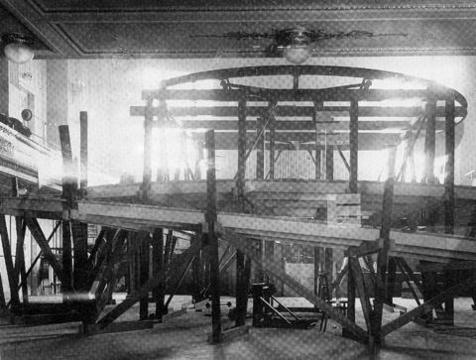For our upcoming exhibition on artist residencies, Rirkrit Tiravanija will reconstruct a stage designed in the 1920s by Viennese architect/theatrical designer Friedrich Kiesler (1890–1965). The Raumbhne, or “space-stage,” was a physical manifestation of “corrrealism,” Kiesler’s theory of “the endless and multidimensional correlation between the human being, the arts and the space.” A temporary, circular, two-story stage, the structure continues Tiravanija’s experiments with and homages to modernist architecture, which have included a chrome recreation of R. M. Schindler’s house in West Hollywood.

But it also fits Tiravanija’s mode of art: he creates situations and structures where people can interact, so that the actual art is not an object at all, but the animation of the space. Thanks to early projects where he cooked curry and pad Thai (the national dish of his native Thailand) in galleries, his art has been labeled “relational aesthetics” (judging artworks on the basis of the inter-human relations they spark) or Joseph Beuys’ notion of “social sculpture.”
It’s also an apt symbol for an exhibition which aims to bring together artists in various disciplines (among past Walker artists in residence, it will highlight choreographer Ralph Lemon and filmmaker Spencer Nakasako, who will visit to participate in public activities) and audiences who can activate the galleries themselves. Stay tuned for a range of in-gallery talks and events “curated” by local artists as well as Tiravanija, Lemon, and Nakasako.
More: The Brooklyn Rail runs an excellent interview with Tiravanija from 2004.
Get Walker Reader in your inbox. Sign up to receive first word about our original videos, commissioned essays, curatorial perspectives, and artist interviews.
